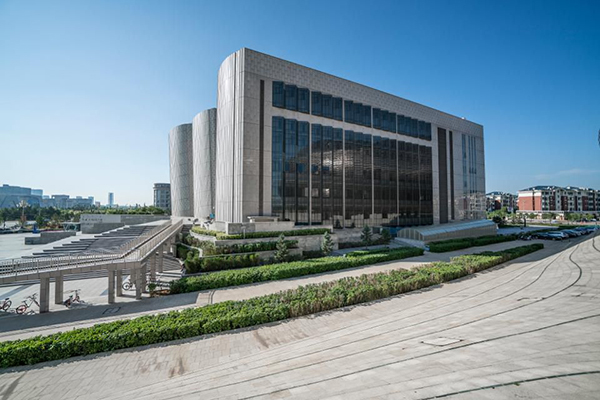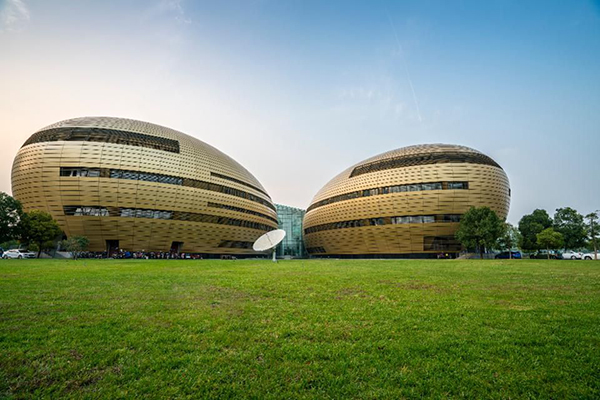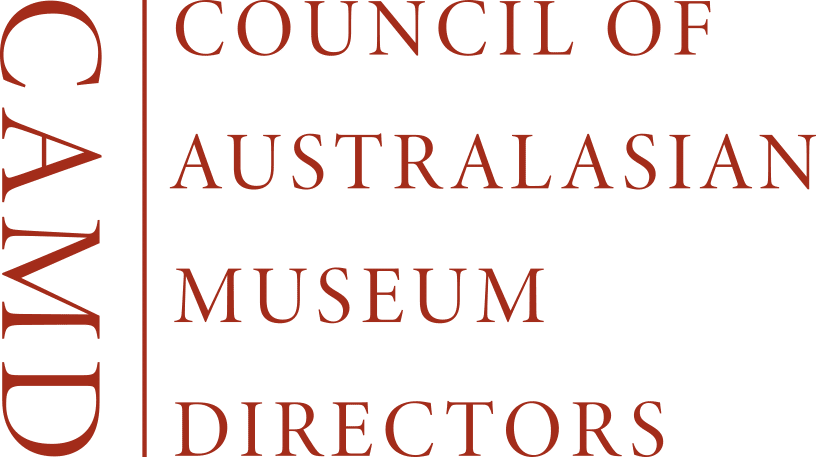Wade Shepard, Why China Has Hundreds Of Empty ‘Ghost’ Museums, Forbes, 20 June 2019
The museum looked like a colossal golden jelly bean. The adjacent library was designed to look, literally, like a row of books on a shelf. Across the street was an opera house that appeared to have been modeled from some kind of ancient Silk Road fortress. These magnificent buildings were all aligned along a massive public plaza that was nearly the size of Beijing’s Tiananmen Square, which ran south from the palace-like edifice of the new local government headquarters. Such monumental public works may have come off as normal along the raging boulevards of a vibrant, uber-modern big city, but out here in Ordos Kangbashi–a quiet and scantly populated new city rising up from the desert of central China– it was difficult to suspend a surreal feeling of disbelief: why would all of this be built here? I would soon discover that it was all a part of a top-down central government initiative to completely revamp China’s cultural infrastructure.
China is in the middle of an all-out museum building boom that is unparalleled in history. As part of a broad central government initiative, thousands of museums have been built across the country over the past decade, with a staggering 451 being opened in 2012 alone. Shanghai even went as far as opening two different art museums directly across the river from each other on the same day. Like many other sectors of China’s unprecedented economic rise, the obsessive drive to build more and more cultural facilities has resulted in a conspicuous dearth of exhibits, let alone demand from people wanting to visit them — leaving hundreds of massive, often opulent, and architecturally iconic buildings sitting underused or even completely empty today.

Ordos Library (Getty), GETTY.
The beginning of the boom
Museums in China are a distinctly modern intrigue. The country’s first museum wasn’t built until the second half of the 19th century, and it was built by a European at that. China’s first locally-curated museum didn’t appear until 1905, right at the beginning of a tumultuous century that would see the fall of the Qing Dynasty, civil war, Japanese occupation, the rise of the Communist Party, mass famine, the Cultural Revolution, and Reform and Opening — definitely not a climate for the cultivation of the arts.
As China stabilized and began rising economically in the late 1980s, the country dived into a national infrastructure rejuvenation program that saw the wholesale rebuilding of virtually every city, the founding of hundreds of new cities and districts, and the creation of myriad special economic zones and logistics hubs. However, as China’s construction boom progressed it was not purely limited to the pragmatic, as the seas of monotonous high-rise apartments, cookie-cutter shopping malls, industrial zones, and transport hubs were matched by a comparable zest for cultural buildings and the cultivation of a more robust humanities sector. So the construction of museums, opera houses, and libraries became a fundamental part of China’s developmental playbook, as outlined by multiple central government five-year plans. Now, almost every new city or district is built along a similar plan as Ordos Kangbashi, with a clutch of iconic cultural buildings at its core—whether the place really needs them or not.
“If you looked across the world to those countries that they felt they wanted to aspire towards, they recognized that they had a deficit in the number of cultural facilities and institutions,” explained Jeffery Johnson, the director of the China Megacities Lab who has extensively researched China’s museum building strategies from the ground.
It is estimated that China currently has around 5,100 museums and related institutions. The United States, on the other hand, has more than 30,000. So there is still a lot of building left to do, as China’s museum boom continues.

Henan Art Center (Getty), GETTY.
As with any directive from Beijing, a fierce competition between municipalities soon arose when it came to museum construction, with each mayor wanting to build more monumental, attention-grabbing museums designed by more famous architects than those of other cities. This drive to bolster central government strategies isn’t just a play for status by local officials but is often a requisite for promotion within the Communist Party. As Johnson explains:
“As a politician you’re not elected, you’re appointed. So if there’s an initiative from the central government to construct more cultural institutions, you, as a mayor, want to impress upon your superiors your ability to follow through on these initiatives. So you go out and you build these facilities. Then when your superiors come to town for meetings you drive them around the center of your new town, your new city, and show them what beautiful museums and cultural facilities you have.”
In this melee, many of these new cultural facilities have been branded as vanity projects that are more designed to display the prowess of the local government officials rather than actual exhibits.
“Everybody wants to be the center point of attention. These cities and these districts are fighting for attention and fighting for investment,” said Daan Roggeveen, a founding partner of MORE Architecture, a China-based firm that has designed many innovative buildings across the country, including the new Ginko Gallery museum.
